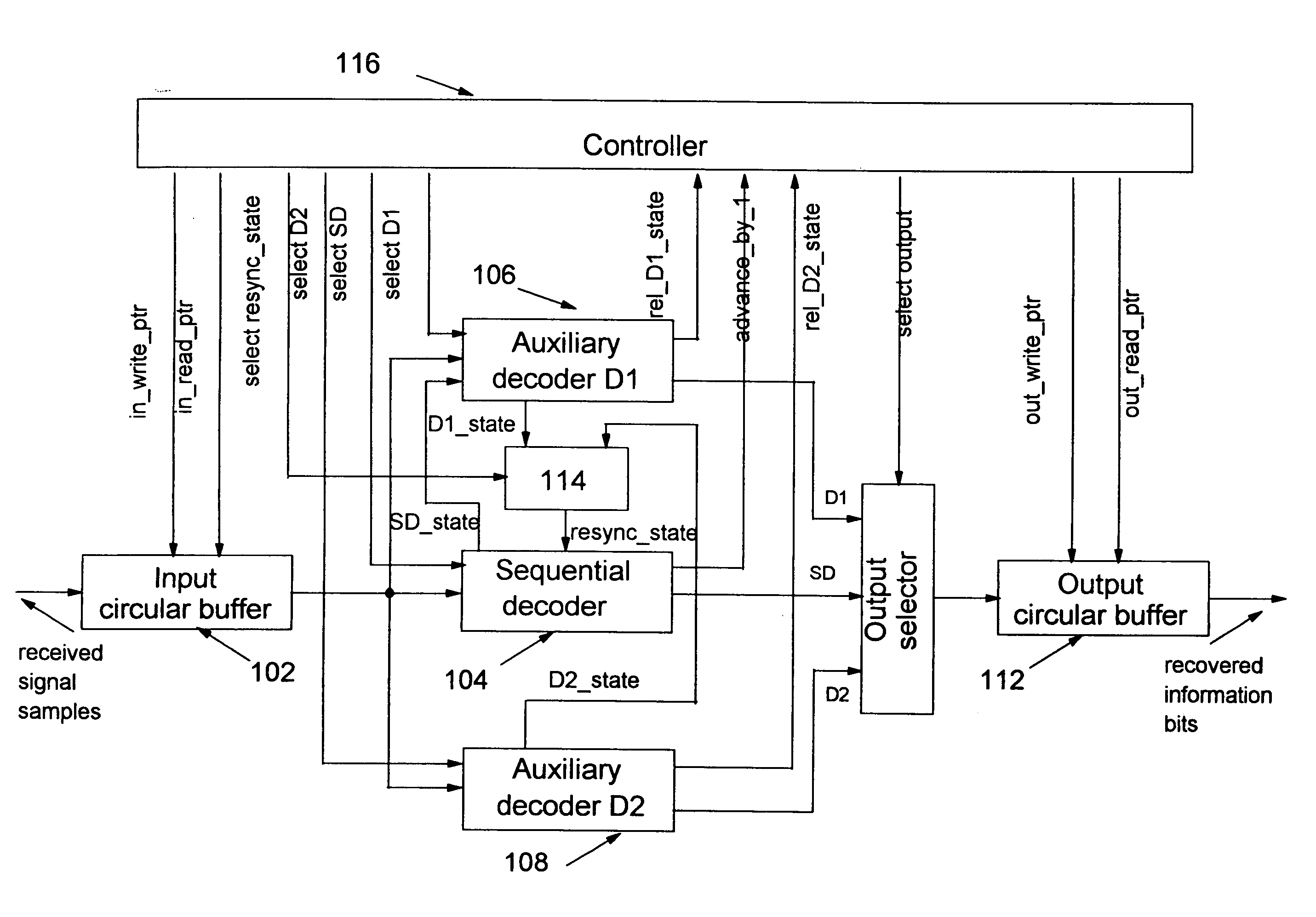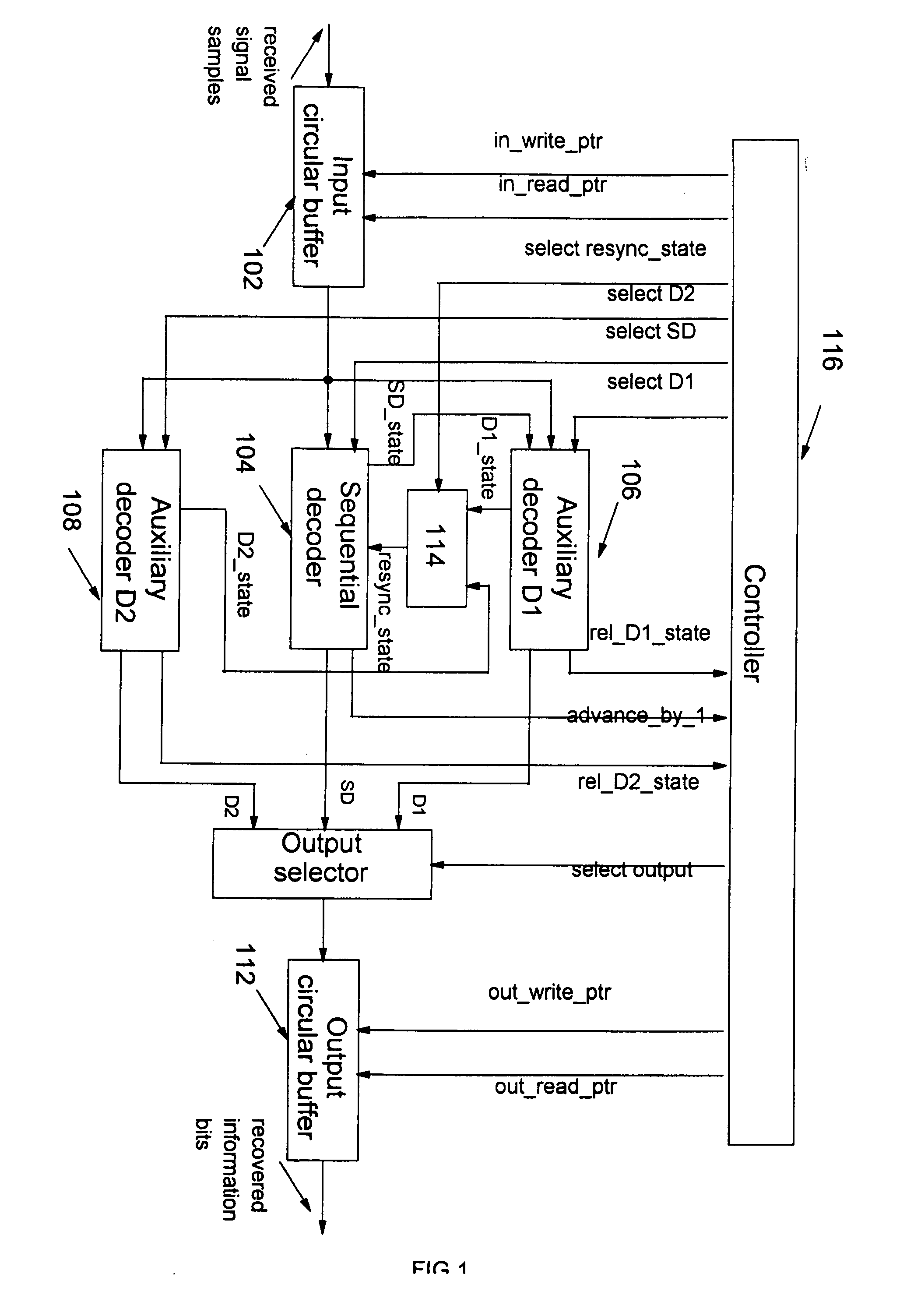Method and apparatus for reliable resynchronization of sequential decoders
a sequential decoder and resynchronization technology, applied in the field of sequential decoders, can solve the problems of non-negligent performance loss, complexity reduction, complexity increase, etc., and achieve the effect of reducing the complexity of an auxiliary map algorithm and avoiding erasur
- Summary
- Abstract
- Description
- Claims
- Application Information
AI Technical Summary
Benefits of technology
Problems solved by technology
Method used
Image
Examples
Embodiment Construction
[0030] Referring first to FIG. 1, a block diagram of a preferred embodiment of the invention is described. Received signal samples are first input to a circular buffer 102, having Li memory locations. A sequential decoder 104 is connected to the input circular buffer by means of a signal samples line which is also input of a first auxiliary decoder 106 and of a second auxiliary decoder 108. The first and the second auxiliary decoders are preferably of the type reduced-state MAP decoders, but any general decoders that are able to provide a measure of the reliability of the state estimate could be used. One output of the sequential decoder (referenced SD on FIG. 1), of the first auxiliary decoder (referenced D1 on FIG. 1), and the second auxiliary decoder (referenced D2 on FIG. 1) are inputs of an output selector 110. The output selector is connected to an output circular buffer 112 to output the recovered information bits after the decoding process. A state selector 114 receives stat...
PUM
 Login to View More
Login to View More Abstract
Description
Claims
Application Information
 Login to View More
Login to View More - R&D
- Intellectual Property
- Life Sciences
- Materials
- Tech Scout
- Unparalleled Data Quality
- Higher Quality Content
- 60% Fewer Hallucinations
Browse by: Latest US Patents, China's latest patents, Technical Efficacy Thesaurus, Application Domain, Technology Topic, Popular Technical Reports.
© 2025 PatSnap. All rights reserved.Legal|Privacy policy|Modern Slavery Act Transparency Statement|Sitemap|About US| Contact US: help@patsnap.com


